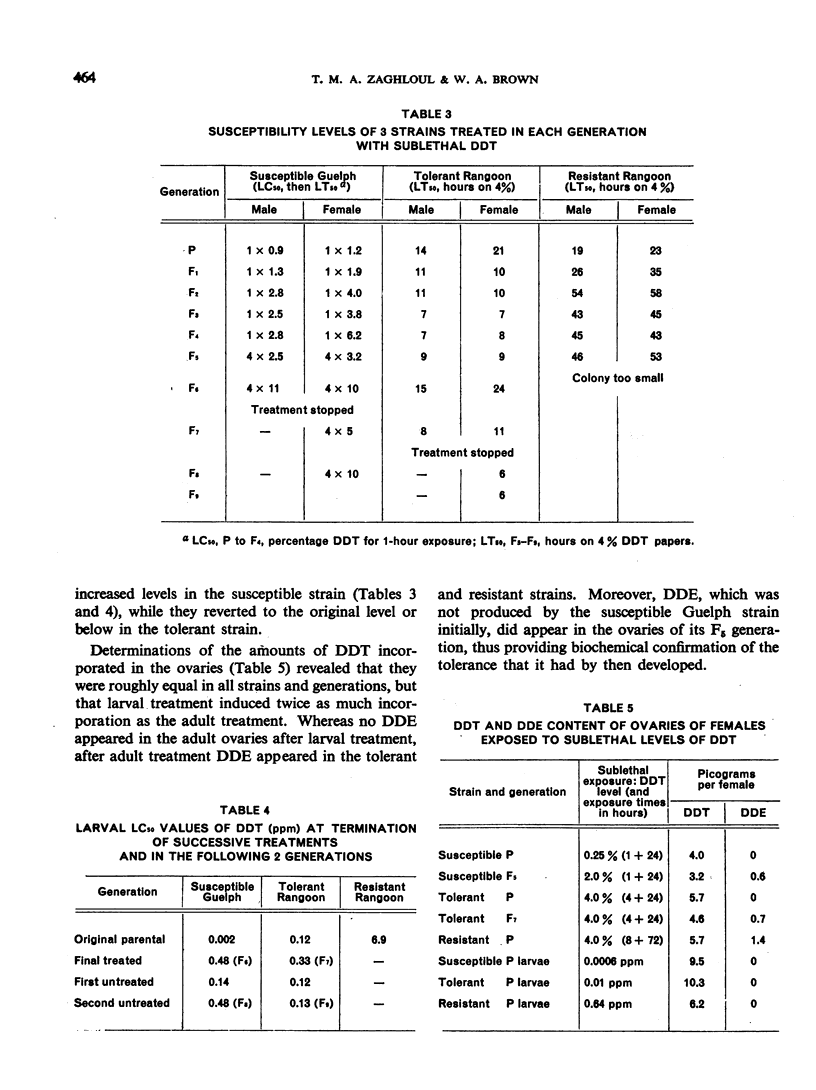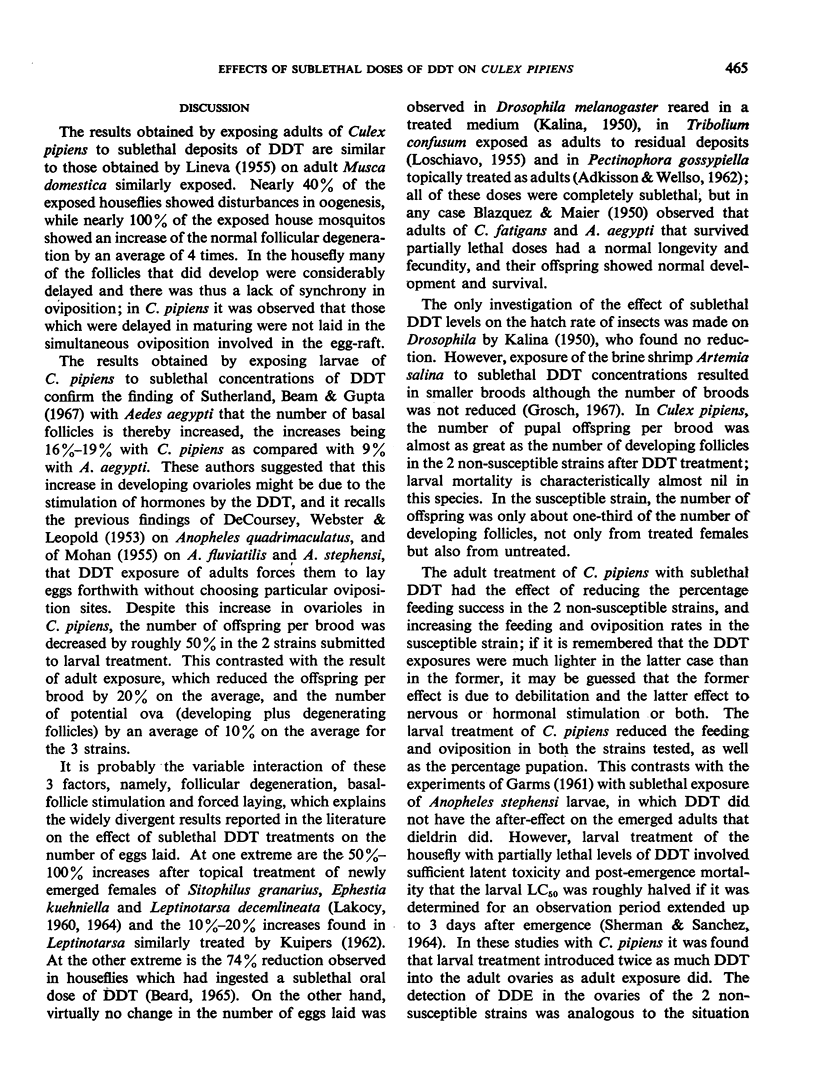Abstract
The effect of non-selecting doses of DDT on the induction of resistance was investigated in the house mosquito, Culex pipiens. Sublethal doses of DDT were applied to the adults in each generation, at levels which just fell short of causing mortality in these adults. A susceptible strain, a DDT-resistant strain, and a slightly DDT-tolerant strain were so treated for 6-7 generations.
It was found that the treatment initially caused approximately 25% of the ovaries to degenerate, and reduced the proportion of females that fed and oviposited. This reduction in biotic potential became aggravated in successive generations of the DDT-resistant and DDT-tolerant strains, which failed to show any material increase in resistance level. In the susceptible strain, however, the biotic potential became enhanced, and considerable resistance was developed. It was concluded that the increase of resistance in this strain was due to hidden selection, of eggs in the ovary, and of females which failed to oviposit.
Full text
PDF










Images in this article
Selected References
These references are in PubMed. This may not be the complete list of references from this article.
- Derbeneva-Uhova V. P., Lineva V. A., Drobozina V. P. The development of DDT-resistance in Musca domestica and Protophormia terraenovae. Bull World Health Organ. 1966;34(6):939–952. [PMC free article] [PubMed] [Google Scholar]
- EDDY G. W., COLE M. M., COUCH M. D., SELHIME A. Resistance of human body lice to insecticides. Public Health Rep. 1955 Oct;70(10):1035–1038. [PMC free article] [PubMed] [Google Scholar]
- FAY R. W., BAKER W. C., GRAINGER M. M. Laboratory studies on the resistance of Anopheles quadrimaculatus to DDT and other insecticides. J Natl Malar Soc. 1949 Jun;8(2):137–146. [PubMed] [Google Scholar]
- GARMS R. [Observations on the course of the effect of Dieldrin on Anopheles larvae (A. stephensi and A. atroparvus)]. Z Tropenmed Parasitol. 1961 Oct;12:262–273. [PubMed] [Google Scholar]
- Grosch D. S. Poisoning with DDT: effect on reproductive performance of Artemia. Science. 1967 Feb 3;155(3762):592–593. doi: 10.1126/science.155.3762.592. [DOI] [PubMed] [Google Scholar]
- Havertz D. S., Curtin T. J. Reproductive behavior of Aedes aegypti (L.) sublethally exposed to DDT. J Med Entomol. 1967 May;4(2):143–145. doi: 10.1093/jmedent/4.2.143. [DOI] [PubMed] [Google Scholar]
- KALINA B. F. Development and viability of Drosophila melanogaster on a medium containing DDT. Science. 1950 Jan 13;111(2872):39–39. doi: 10.1126/science.111.2872.39. [DOI] [PubMed] [Google Scholar]
- KIMURA T., DUFFY J. R., BROWN A. W. DEHYDROCHLORINATION AND DDT-RESISTANCE IN CULEX MOSQUITOS. Bull World Health Organ. 1965;32:557–561. [PMC free article] [PubMed] [Google Scholar]
- Sanchez F. F., Sherman M. Penetration and metabolism of DDT in resistant and susceptible house flies and the effect on latent toxicity. J Econ Entomol. 1966 Apr;59(2):272–277. doi: 10.1093/jee/59.2.272. [DOI] [PubMed] [Google Scholar]
- Tadano T., Brown A. W. Development of resistance to various insecticides in Culex pipiens fatigans Wiedemann. Bull World Health Organ. 1966;35(2):189–201. [PMC free article] [PubMed] [Google Scholar]



